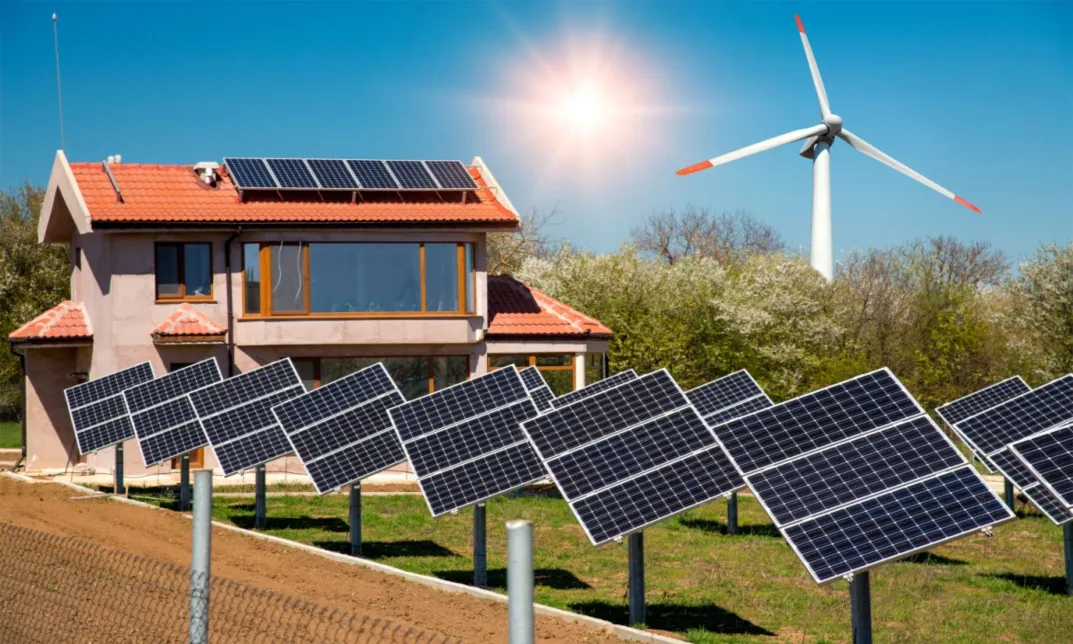No products in the cart.
An Energy Management System (EMS) is a blend of software and hardware equipment. Moreover, it efficiently distributes energy among various sources, like solar panels and batteries. Organisations use EMS to reduce costs, reduce environmental impact, and maintain stability within the power grid.
What is Energy Management?
Energy management is a system that monitors the overall energy consumption of a building or business. The energy management process helps identify the inflow and outflow of energy. Thus, it helps to reduce the energy cost of a building or business.

Furthermore, EMS may help manufacturers predict their energy requirements for various industrial processes and outputs. As a result, manufacturers can capture more business by offering competitive prices.
Components of Energy Management Systems
There are a few important components of EMS that conclude the whole process. Here are the following components:
Monitoring and Measurement Devices
Monitoring and measurement devices that collect energy usage data are key elements of any EMS. These devices include smart meters, sub-meters, sensors, and data loggers. As a result, they collect data on power, gas, water, and other services.
Energy-Efficient Equipment
EMS often links with energy-efficient equipment like HVAC systems, lighting fixtures, and machinery. Moreover, these devices help reduce energy waste while maintaining optimal performance.
Control Systems
Control systems allow users to monitor and adjust energy-consuming devices and processes. Thus, they facilitate smart energy management and keep energy consumption below acceptable limits.
Data Analysis and Reporting Tools
Data analysis and reporting tools are crucial for converting raw energy data into valuable data. These tools help to identify trends, anomalies, and areas for improvement. They provide detailed reports and visuals to ease decision-making.
Types of Energy Management Systems
There are various types of EMS across the world. The kinds of EMS depend on the needs and contexts of different infrastructures and organisations. Some of the types of EMS include:
Cloud-Based Energy Management System (CEMS):
CEMS uses cloud computing technology to provide remote monitoring, analysis, and control of energy usage and systems. Additionally, cloud-based EMS stores data and applications on remote servers accessible via the Internet. Some key features of cloud-based EMS include:
- Remote Accessibility
- Scalability
- Real-Time Data Analysis
- Integration with IoT Devices
- Enhanced Collaboration
- Automatic Software Updates
Forecast-Based Energy Management System (FEMS):
A FEMS uses predictive analytics and forecasting algorithms to anticipate future energy demand. FEMS analyses historical data, weather forecasts, occupancy patterns, and other relevant factors. Here are some key features:
- Predictive Modelling
- Dynamic Energy Scheduling
- Demand Response Integration
- Optimisation Algorithms
- Continuous Improvement
Rule-Based Energy Management System (REMS):
REMS uses specific guidelines and logic to manage energy consumption and systems. REMS automates energy management operations and decision-making by applying the specified rules and logic. Some features of rule-based EMS include:
- Customisable Rules
- Automated Control
- Event-Based Actions
- Adaptive Control
What are the benefits of EMS?
EMS offers several benefits, contributing to both environmental sustainability and cost savings. Here are some key advantages:
- Reduced Energy Consumption: Energy management systems help identify areas of inefficiency and waste in energy usage.
- Cost Savings: This includes strategies such as load shifting, demand response, and peak shaving for lower electricity expenses.
- Improved Operational Efficiency: EMS provides real-time data on energy usage, allowing organisations to identify trends, patterns, and anomalies.
- Environmental Sustainability: By lowering energy use and greenhouse gas emissions, EMS contributes to environmental sustainability.
- Enhanced Equipment Performance and Lifespan: Monitoring energy usage can also help identify issues with equipment performance or maintenance needs.
- Predictive Maintenance: This proactive approach helps minimise downtime, improve reliability, and reduce maintenance costs.
- Compliance and Reporting: EMS helps ensure compliance with energy regulations and reporting requirements.
- Employee Engagement and Awareness: Implementing EMS encourages employee engagement and awareness of energy conservation practices.
EMS and International Organisation for Standardisation (ISO) 50001
ISO is a global organisation that develops and maintains best practice standards for business and industry. ISO 50001 is a standard that outlines best practices for energy management systems. Moreover, ISO 50001 provides recommendations and methods to assist you in reaching a consensus and commitment to energy policy. Furthermore, it can assist you in setting energy efficiency targets and implementing advances in your production process to fulfil your promises. Some of the benefits of implementing ISO 50001 include:
- Cost savings through energy efficiency.
- Reduced environmental impact and emissions.
- Enhanced operational efficiency and productivity.
- Compliance with energy regulations.
- Improved risk management.
- Competitive advantage in the market.
- Strengthened stakeholder trust and confidence.
- Fostering a culture of continuous improvement.
Future Trends in Energy Management Systems
As technology advances, different trends are influencing the future of energy management systems. The following factors are discussed below:
Advancements in IoT and AI Technologies
The IoT devices and AI algorithms enable more modern energy management strategies, such as predictive maintenance and demand response optimisation.
Integration with Smart Grids
Energy management systems are increasingly integrated with smart grids, enabling bidirectional communication between utilities and end-users. Thus, it facilitates dynamic pricing and demand-side management among them.
Demand Response Programs
Demand response programs allow businesses to adjust their energy consumption in real time based on grid conditions and pricing signals. As a result, they can take advantage of off-peak rates and reduce peak demand.
Focus on Energy Storage Solutions
The expanding acceptance of renewable energy sources like solar and wind has sparked greater interest in energy storage solutions such as batteries and pumped hydro storage. Moreover, these technologies are pivotal in balancing energy supply and demand.
How much does EMS cost in the UK?
The cost of installing an EMS in the UK varies depending on factors such as the structure of the building, the complexity of the system, and the project requirements. Generally, the cost can range from £5,000 to £20,000 for a small to medium-sized building. Moreover, larger buildings with complex energy management requirements may incur costs of £50,000 or more. Therefore, consulting with EMS providers or energy management consultants is important to obtain accurate quotes that fit your requirements.
Conclusion
EMS provides a complete solution for businesses aiming to improve efficiency, reduce expenses, and support environmental sustainability. Moreover, the use of advanced technologies and data analysis in EMS is evident. As a result, businesses and individuals can make substantial savings while helping create a more eco-friendly future.







